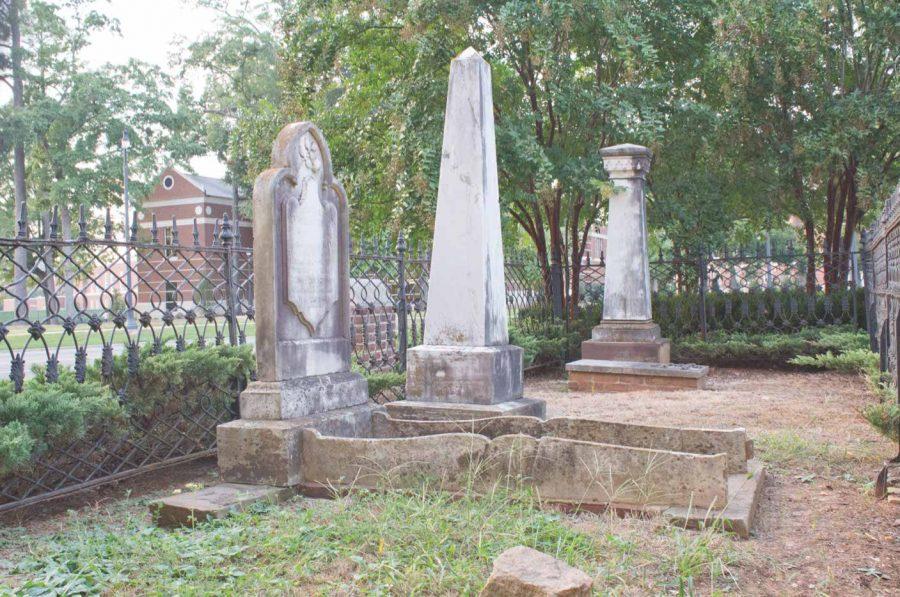Nestled beside a building dedicated to studying the science of life sits a memorial to the end of life and a reminder of its imminence.
Next to the Biology building is a small cemetery that gives curious students a hint about life in the past on campus.
“In a place like UA, where traditions are so much a part of the student culture, I think it’s really nice that the University tells about the rich and sometimes difficult past. There are few universities, if any, that I think have changed as much as Alabama has in the 182-year history,” Alfred Brophy, Judge John J. Parker Distinguished Professor of Law at The University of North Carolina and former professor of law at The University of Alabama, said. “Over nearly two centuries, the University has changed dramatically from a place that owned human beings to a place where it embraces all students.”
The grave site marks the burial ground of two slaves, Jack Rudolph and William “Boysey” Brown; a student, William J. Crawford, from the antebellum period; and at least four members of professor Horace S. Pratt’s family from around the onset of the Civil War. While there are markers for some of the graves, it is unknown where exactly Rudolph and Brown were interred and whether other slaves were buried there.
“The rest of the cemetery now probably lies under the Biology Building, constructed in 1971. Were the graves of the student and slaves inadvertently disinterred by its construction? The staff of Alabama Heritage prefers to believe that the three bodies rest in peace in the front lawn of Kilgore House,” Pam Jones said in an article for Alabama Heritage.
Brophy said the complexity of the University’s history mirrors that of the nation as a whole.
“I think in a lot of ways you could write the story of American history out of the state of Alabama and, in fact, The University of Alabama’s history. You could use Alabama as a microcosm for talking about our country’s history from the 1830s until the present,” Brophy said.
Many campuses have small cemeteries on campus providing a memento of the fragility of life in the 19th century and a connection to the past, Brophy said.
“I’m more interested in understanding the past – not so much the history but the memory. So, you know there are events that happen in the past, and history isn’t antiseptic; it’s not clean. It’s not as easy as point A to point Z. It’s not as easy as one person did this, another person did that on this date. And that’s kind of how we learn history proper,” Jason Black, associate professor of rhetoric and public discourse and affiliate professor of gender and race studies, said. “I’m more interested in memory, and what memory is about is understanding that the past is sort of nebulous, and it’s constructed, that our past is really the stories that we tell ourselves from times previous to where we are right now.”
Black leads an African-American heritage tour several times a year, highlighting and reflecting on landmarks of campus with significant historical ties.
“One of the things I think UA has done really well is preservation of the landscape. So, you can look behind the President’s Mansion and see the brick sort of small structures where enslaved people lived. So, you’ve got that direct, physical connection to the institution of slavery,” Brophy said. “I’m also proud of the University’s, and particularly the faculty’s, role in recognizing and apologizing for their connections to the institution of slavery.”









